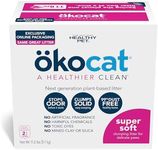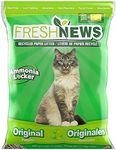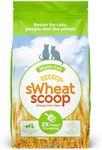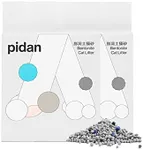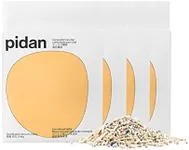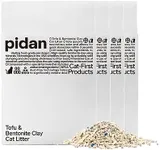Buying Guide for the Best Eco Friendly Cat Litter
Choosing the right eco-friendly cat litter is important for both your cat's health and the environment. Eco-friendly cat litters are made from natural, biodegradable materials that are safer for your pet and reduce your carbon footprint. When selecting the best eco-friendly cat litter, consider factors such as material, odor control, clumping ability, dust levels, and disposal methods. Understanding these key specifications will help you make an informed decision that suits both your cat's needs and your environmental values.MaterialThe material of the cat litter is crucial as it determines its environmental impact and how comfortable it is for your cat. Common eco-friendly materials include recycled paper, wood, corn, wheat, and coconut. Each material has its own benefits; for example, recycled paper is highly absorbent, while wood offers natural odor control. Choose a material that aligns with your environmental values and your cat's preferences. If your cat has allergies or sensitivities, opt for hypoallergenic materials like paper or coconut.
Odor ControlOdor control is essential to keep your home smelling fresh. Eco-friendly cat litters use natural ingredients to neutralize odors. Some materials, like wood and corn, have inherent odor-absorbing properties. Others may include added natural deodorizers like baking soda. If you have multiple cats or a small living space, prioritize litters with strong odor control. Test different options to find one that effectively manages odors without using synthetic chemicals.
Clumping AbilityClumping ability refers to how well the litter forms solid clumps when wet, making it easier to scoop and clean. Eco-friendly litters vary in their clumping capabilities. Corn and wheat-based litters typically clump well, while some wood and paper litters may not clump as effectively. If you prefer a litter that is easy to clean and maintain, look for one with good clumping properties. However, if you prioritize biodegradability and compostability, you might opt for a non-clumping variety.
Dust LevelsDust levels are important for both your cat's respiratory health and your home's cleanliness. High-dust litters can cause respiratory issues and create a mess. Eco-friendly litters generally produce less dust than traditional clay litters. Materials like recycled paper and coconut are known for being low-dust. If your cat has respiratory issues or you want to minimize cleaning, choose a low-dust option. Test different litters to find one that balances dust control with other desired features.
Disposal MethodsDisposal methods for eco-friendly cat litter can vary, and it's important to choose one that aligns with your environmental goals. Some litters are flushable, while others can be composted. Ensure that the litter you choose is safe for your plumbing if you plan to flush it. Compostable litters are a great option for reducing waste, but make sure to follow local guidelines for composting pet waste. Consider your disposal preferences and local regulations when selecting a litter.


